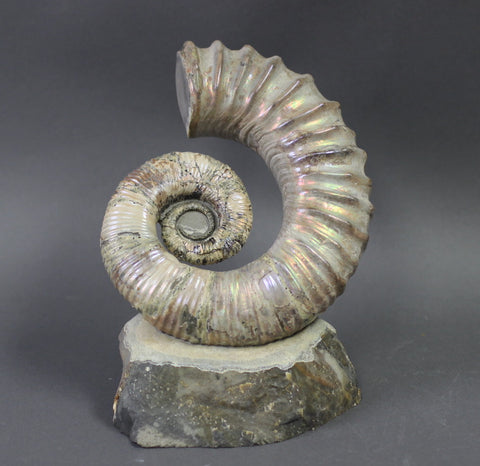Heteromorph Ammonite, Australiceras - 9.5"
This piece has been sold, but we may have a similar item available. Contact us online to make an inquiry.
This superb uncoiled ammonite (Australiceras sp.) was collected in the Volga River, Russia and dates to the Lower Cretaceous - 100 to 145 million years old. It's an extremely fine example with a vibrant outer shell, beautifully displayed on a natural rock base.
Measures 9" high x 8" wide (display measurement on matrix base). Ammonite specimen is 9.5" x 8".
Ammonites have intrigued and fascinated humans for thousands of years. Many cultures - from Australian aboriginals to the ancient Egyptians - collected and treasured these prehistoric and beautiful fossils. Perhaps it has something to do with the Fibonacci spiral pattern of their shell, which mirrors the galaxies.
Ammonites belong to the mollusca phylum in a class known as cephalopods – “head-footed” creatures such as octopus and squid. They swam in ancient oceans from the Devonian Period, about 400 million years ago, to their extinction along with the dinosaurs in the Cretaceous Period, 65 million years ago.
Ammonites were free floating invertebrates that were attacked by plesiosaurs and mosasaurs, two groups of gigantic marine reptiles. One way that ammonites could avoid an attack was to quickly change their buoyancy levels, zig zagging and sinking rapidly.
These incredible prehistoric animals ranged in size from tiny species only a few centimetres in diameter to the monstrous Cretaceous ammonite, Parapuzosia seppenradensis, which grew to about 3 meters and would probably of weigh close to 1500 kilograms!













